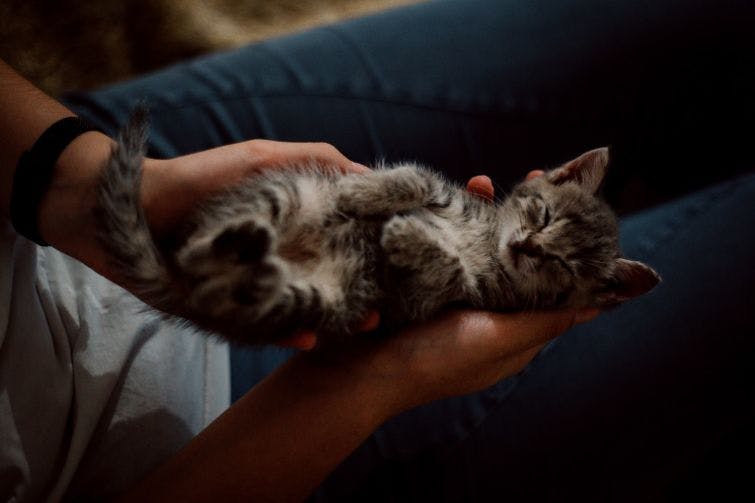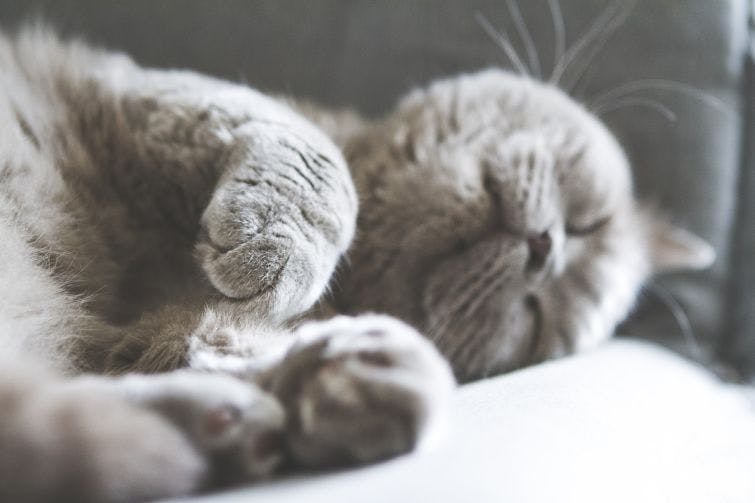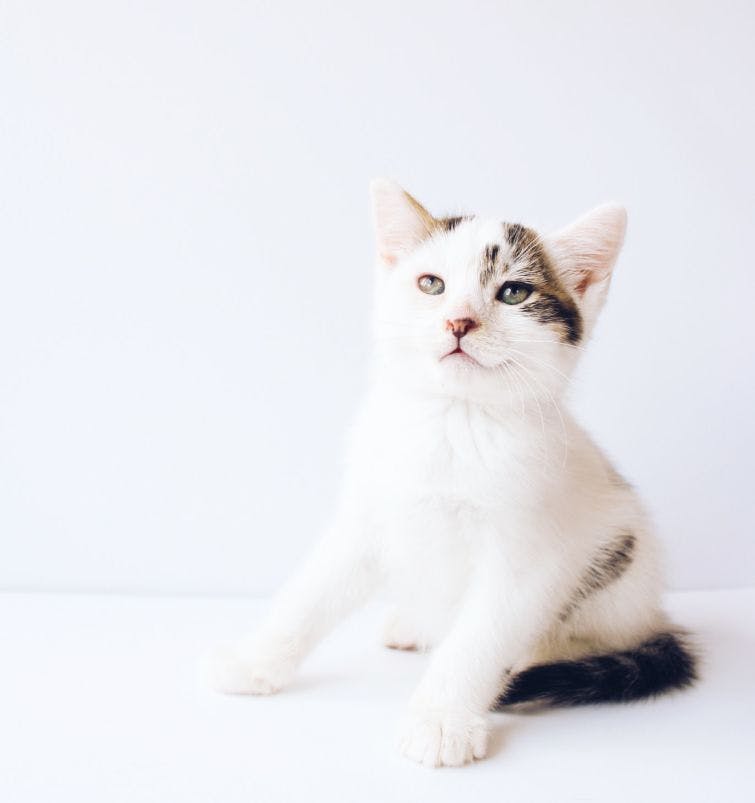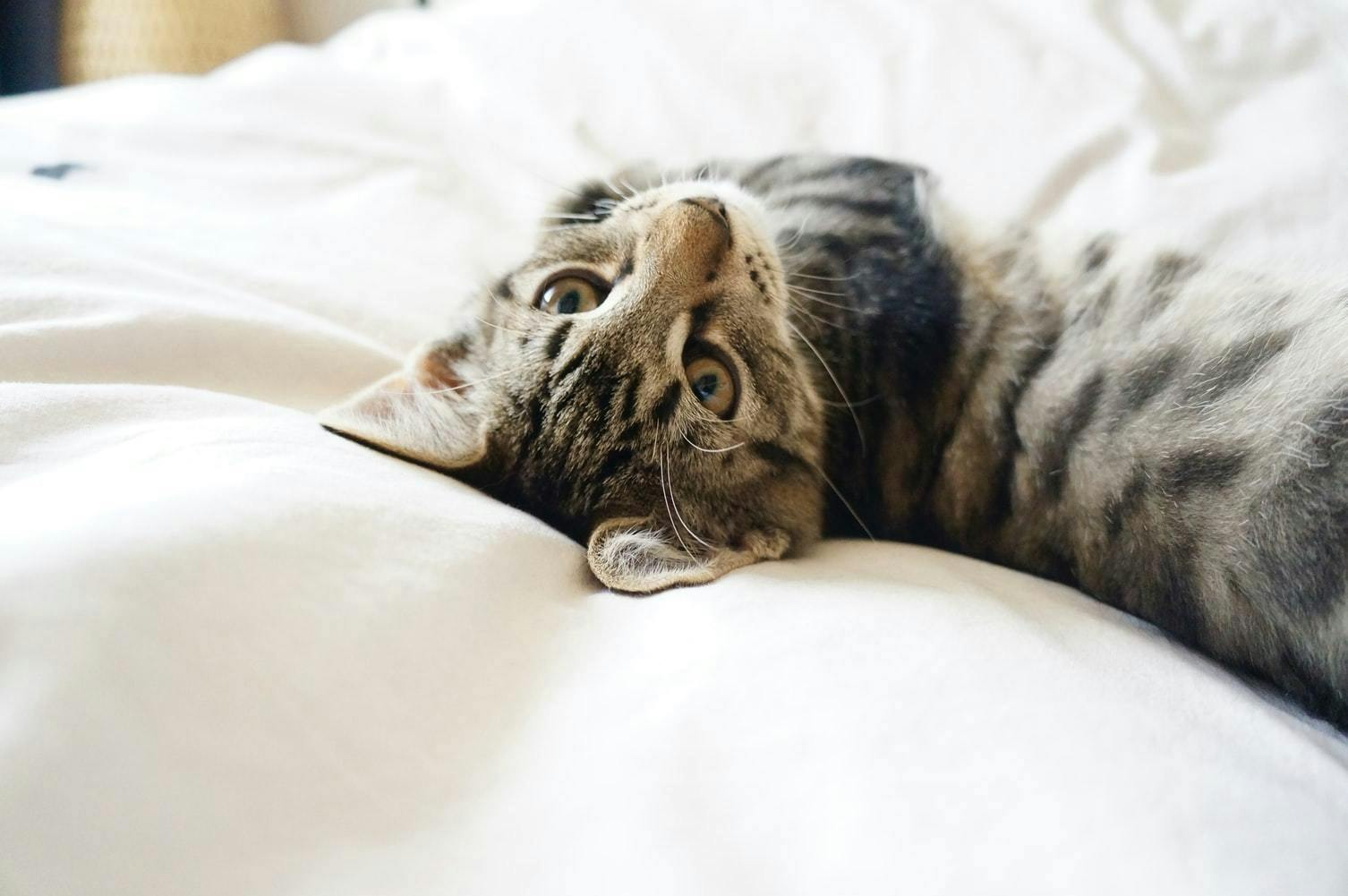An umbilical hernia is a bulging or a protrusion of the abdominal lining, abdominal fat or even portions of abdominal organs through the area around the belly button (navel, umbilicus). This is the result of an occurrence of a small hole in the muscle wall of the abdomen.
Hernias are usually not health threatening and can be easily surgically treated. But why is it important to be aware of this problem? Because umbilical hernias are actually a quite common occurrence in kittens, specifically bottle fed kittens and if not resolved on its own and left untreated, hernias can stretch and get larger.
The bigger the hernia, the more insides can protrude to the outside. This further leads to major complications. Without further ado, let’s discuss why this problem arises in the first place and what we can do about it!
Causes
The umbilicus (the belly button) in cats is located just below the ribcage. When an umbilical hernia is present, there’s an opening within the muscle wall in this area of the body.
During the prenatal development, fetus kitten takes the nutrients from its mom through the umbilical blood vessel which passes through the umbilical ring (an opening in the abdominal muscles). After the birth, the umbilical ring closes. The incomplete closure of this ring will lead to the formation of an umbilical hernia.
"The hernia generally appears as a soft swelling beneath the skin and it often protrudes when the cat is standing, meowing, crying, or straining." - Ernest Ward, DVM, Surgical Conditions on VCA Hospitals.

A lot of times, the incomplete closure of the umbilical ring occurs in foster situations when the kittens are being excessively handled in the belly button area. A foster caretaker may be rubbing the baby’s belly to stimulate it to potty or they may even be tempted to remove the drying umbilical cord.
It is very important to remember that the belly massages are supposed to be conducted gently and in the lower area (the genital area), and that the umbilical cord should always be left to fall off on its own! If we remove the cord too soon, we risk preventing the abdominal wall to heal and close off completely and correctly.
Hernias can vary in size from 1cm to more than 2.5cm in diameter. Some hernias can reduce or even close off completely spontaneously, but other hernias can stretch and become even larger. As far as occurrence rate concerns, Ward explains:
"T__he exact incidence and cause is unknown. Certain family lines have a higher incidence of umbilical hernias suggesting at least a partial genetic predisposition to the condition.".

Prognosis and treatment
If the kitten has a large hernia, it has to be surgically repaired right away. If the hernias are small, then it is recommended wait until spaying/neutering to see if hernia closes off on its own. Reducible hernias typically close off by the time your kitten is about 3 to 4 months old. If hernia isn’t closed by the spaying/neutering time, surgical repair will be highly recommended.
"The surgery can be performed at the time of spaying and neutering. The fibrous or scar tissues that have formed around the hernia are dissected out and the defect is closed with sutures." - stresses Ward.
If the hernias are they grow larger, it would allow more insides to protrude to the outside. Most of the time it is only the visceral fat that protrudes, but sometimes, even intestines can be included. And this is a very big problem. If hernia traps intestines (or other tissues) and starts strangulating them (preventing the blood flow to them), these tissues may start dying out. This requires immediate surgical interventions without exceptions.

The prognosis of the condition post-surgery is excellent. Only a very few cats experience a recurrent hernia or postoperative complications. It is very important to be aware of this condition (among many more) during the kitten’s nursing days in order to take all the possible preventative measures, recognize the problem early on and address it timely and correctly.
